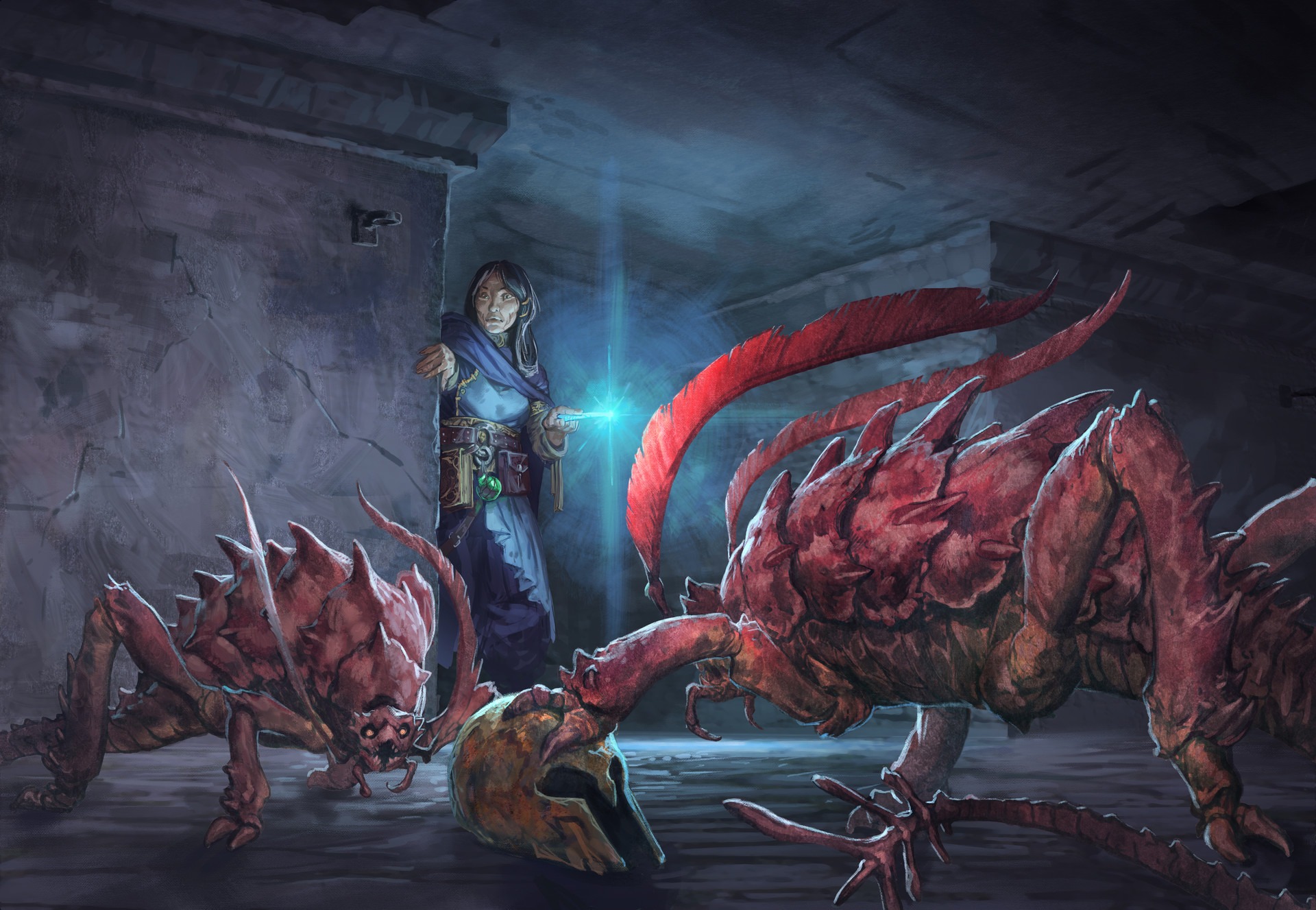
 Target/Range information: Attack actions normally describe targeting information. For example "+14 to hit" or "DC21 Dexterity save". Attack/Defense enumeration: Attack actions normally specify either a "to hit" bonus or details of a saving throw that the target must make. For example "The dragon exhales fire in a 60-foot cone". Special attacks instead typically describe very briefly the attack type, range and shape. Common examples include "Melee Weapon Attack", "Ranged Weapon Attack" and "Ranged Spell Attack". Attack Type: Most attack actions employ a standardized short form to indicate the general attack range (for example melee or ranged) and type (for example weapon or spell), along with the keyword "attack". Usage: Some actions are of limited usage and this is normally noted in braces immediately after the attack name. Name: All formally presented actions start with a short descriptive name for that action, frequently this is a single word. The components themselves are pretty straightforward and tend to focus primarily on supporting attacks. And just like PCs monsters also have a Reaction and a Bonus Action that they may use, if they have a way of doing so.įormally expressed actions use certain common elements to standardize documentation, though some actions may omit almost all of these components. Just like PCs each monster can move and take one Action on its turn.
Target/Range information: Attack actions normally describe targeting information. For example "+14 to hit" or "DC21 Dexterity save". Attack/Defense enumeration: Attack actions normally specify either a "to hit" bonus or details of a saving throw that the target must make. For example "The dragon exhales fire in a 60-foot cone". Special attacks instead typically describe very briefly the attack type, range and shape. Common examples include "Melee Weapon Attack", "Ranged Weapon Attack" and "Ranged Spell Attack". Attack Type: Most attack actions employ a standardized short form to indicate the general attack range (for example melee or ranged) and type (for example weapon or spell), along with the keyword "attack". Usage: Some actions are of limited usage and this is normally noted in braces immediately after the attack name. Name: All formally presented actions start with a short descriptive name for that action, frequently this is a single word. The components themselves are pretty straightforward and tend to focus primarily on supporting attacks. And just like PCs monsters also have a Reaction and a Bonus Action that they may use, if they have a way of doing so.įormally expressed actions use certain common elements to standardize documentation, though some actions may omit almost all of these components. Just like PCs each monster can move and take one Action on its turn. 
Monsters are subject to the same action economy as player characters, although some monsters are able to extend this action economy in ways that PCs cannot - most notably Legendary Creatures.

From here we consider how we Build Attack Actions so that we can complete the stat block of our Example Monster. We will start with a general Overview of the different actions - Move, Action, Reaction and Bonus Action. I originally intended to include the Attack Bonus analysis in this instalment, however I've decided to post this part on its own and continue working on Attack Bonus as its own separate article. Some of these articles seem to take on a life of their own and grow longer in the writing. Surf continues on into the final parts of the monster stat block. D&D 5e Monsters: Part 8: Construction: Actions







 0 kommentar(er)
0 kommentar(er)
